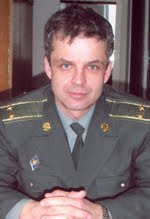Staunton, September 28, 2016 In what many are calling “the Putin effect,” countries across Eastern Europe,
including even Belarus, nominally Russia’s closest ally, are now arming
themselves even when they have to cut social welfare spending because, in the
words of one commentator, “no one wants to be the next Ukraine.”
This sacrifice makes
them producers of security and not just consumers who rely on others, including
NATO and the United States, whatever some Western politicians may say; and it is
an indication of just how frightened they are that the Kremlin leader, however
bogged down he may be in Ukraine, appears to them as a continuing existential
threat.
Some of the increases
these countries are making in their defense structures are usefully surveyed
today by the Belsat news agency.
Poland has done perhaps more than anyone else,
beefing up its territorial defense and increasing the size of its military,
including the development of a system of reserves modeled on the US National
Guard and plans to purchase new weapons systems in the coming years.
The Czech
Republic, Belsat says, has moved in “the very same direction,” approving a
security and foreign policy strategy based on the proposition that Russia is
now a major threat. It has increased defense spending, as has Slovakia for the
same reasons.
The three Baltic countries
have increased the size of their forces and their spending on defense. Estonia
plans to spend over the next four years more than Belarus does. Latvia is
raising its defense spending to two percent of GDP. And Lithuania is forming
special forces and a trilateral force with Poland and Ukraine. The Scandinavian
countries are also increasing their defense capacity and links with NATO. Estonia,
Belarus and Ukraine have retained the draft, and Latvia is thinking about
restoring it in order to guarantee a sufficiently large defense force. Finland
has a draft, and Sweden is now debating restoring obligatory military service.
Tanks drive during a NATO Response Force (NRF)
troops exercise in Zagan, southwest Poland on June 18, 2015. Photo by AFP
Paul Goble is a longtime specialist on ethnic and
religious questions in Eurasia. Most recently, he was director of research and
publications at the Azerbaijan Diplomatic Academy. Earlier, he served as vice
dean for the social sciences and humanities at Audentes University in Tallinn
and a senior research associate at the EuroCollege of the University of Tartu
in Estonia. He has served in various capacities in the U.S. State Department,
the Central Intelligence Agency and the International Broadcasting Bureau as
well as at the Voice of America and Radio Free Europe/Radio Liberty and at the
Carnegie Endowment for International Peace.








